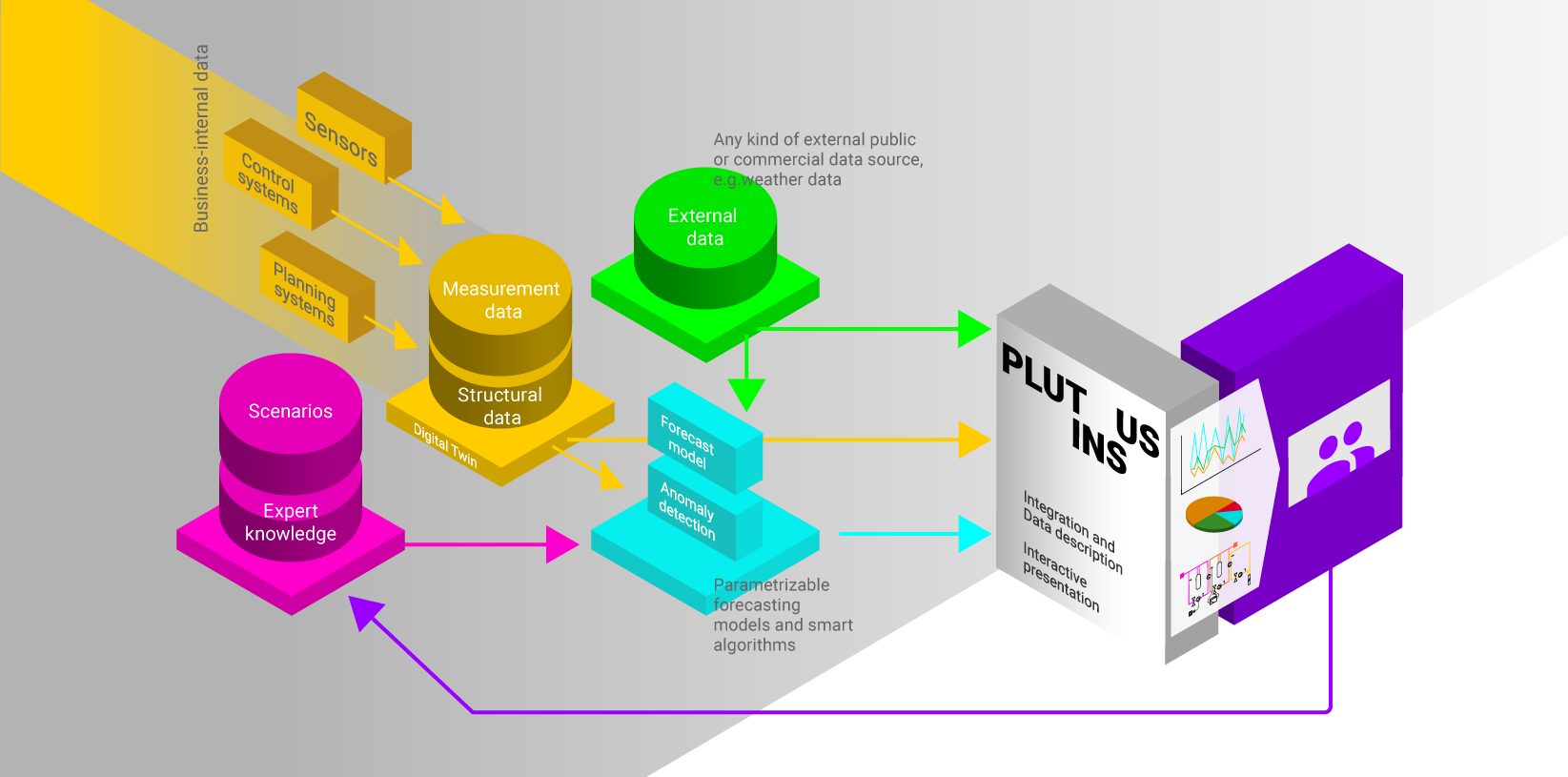 Use case 2: Medium- and long-term planning for energy service infrastructure
Use case 2: Medium- and long-term planning for energy service infrastructure
Who is this for?
- Managers of distribution grids and energy services
- Heads of asset management
- Consultants for grid or district planning
Why is this a problem?
- Energy service infrastructure components will be put in place for at least the next 40 years, that is until 2060. Decisions today will need to last through the whole transition period of the new energy strategy – where network loads will be fluctuating more widely.
- Future energy demand per energy mode – and the resulting network loads – will depend on a number of technical, political, customer-dependent and operator-influenceable factors – increasing the uncertainty.
- Parametrizable, sophisticated energy demand forecasting models can provide load estimates for various scenarios but need advanced analysis tools in order to build trust, enable understanding and ensure correct conclusions.
How can Plutinsus solve this?
- Plutinsus provides a software tool for easy and efficient data analysis.
- Define various scenarios and calculate forecasted energy demand for the next 10 to 30 years (split by energy modes).
- Import infrastructure topology and component details.
- Understand the results and calculation details of various supply, demand and network scenarios through interactive analysis, based on
- Demographic, mobility, technology and other fundamental, external developments
- Energy policy, technology, consumption habits and other energy-related developments
- Utility network, component technology, demand shaping and other influenceable developments
- Compare scenarios
- At different levels of forecast calculation details
- With respect to various network segments and distributed energy resources (producer, consumer, storage)
- Regarding the seasonal shift of peak loads, best- and worst-case outcomes
- Also different versions of the forecasting model against each other – as models are updated from time to time
- Include predictions of network loads and subsequently bottlenecks based on these scenarios

